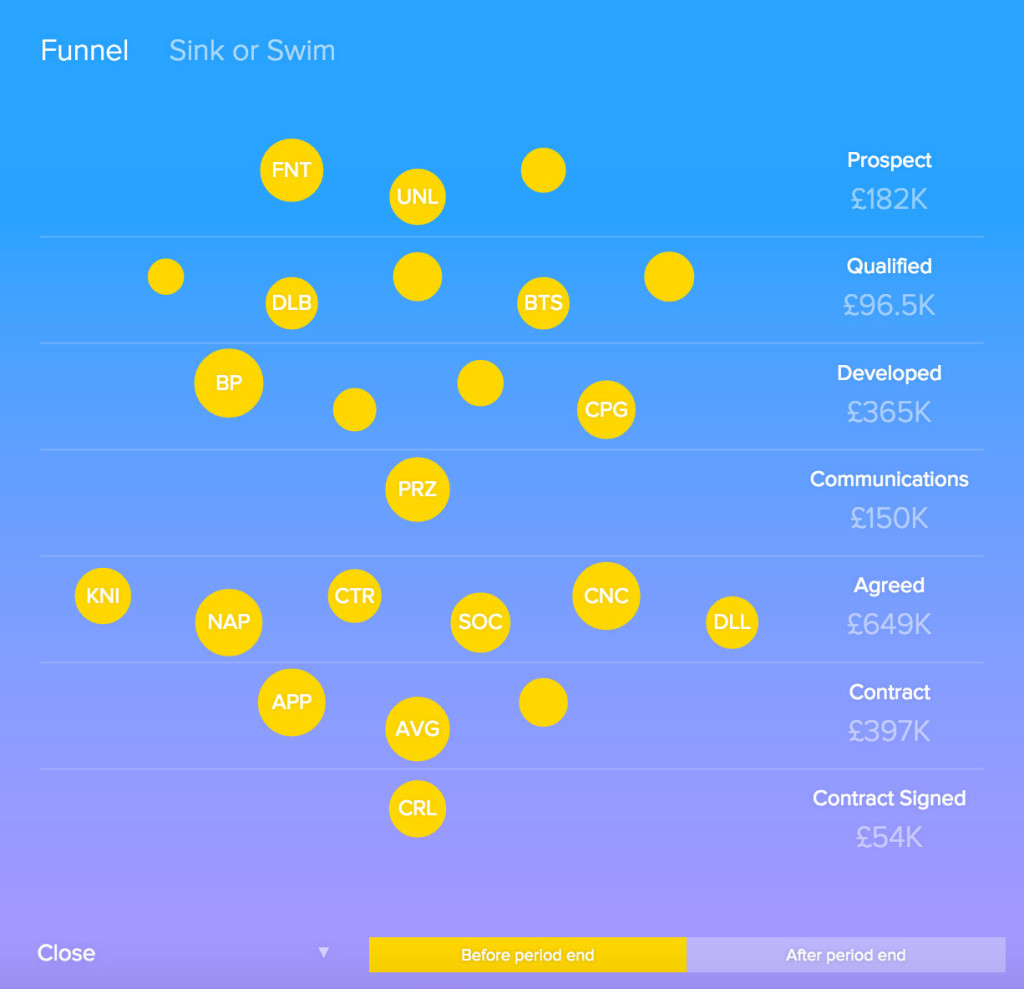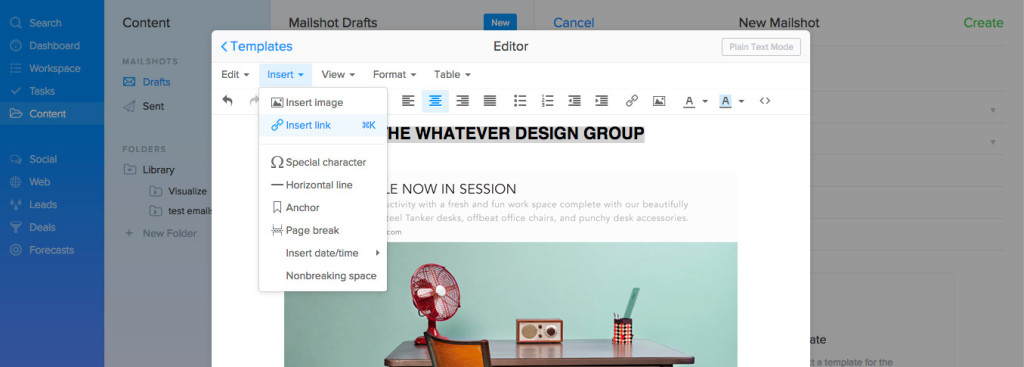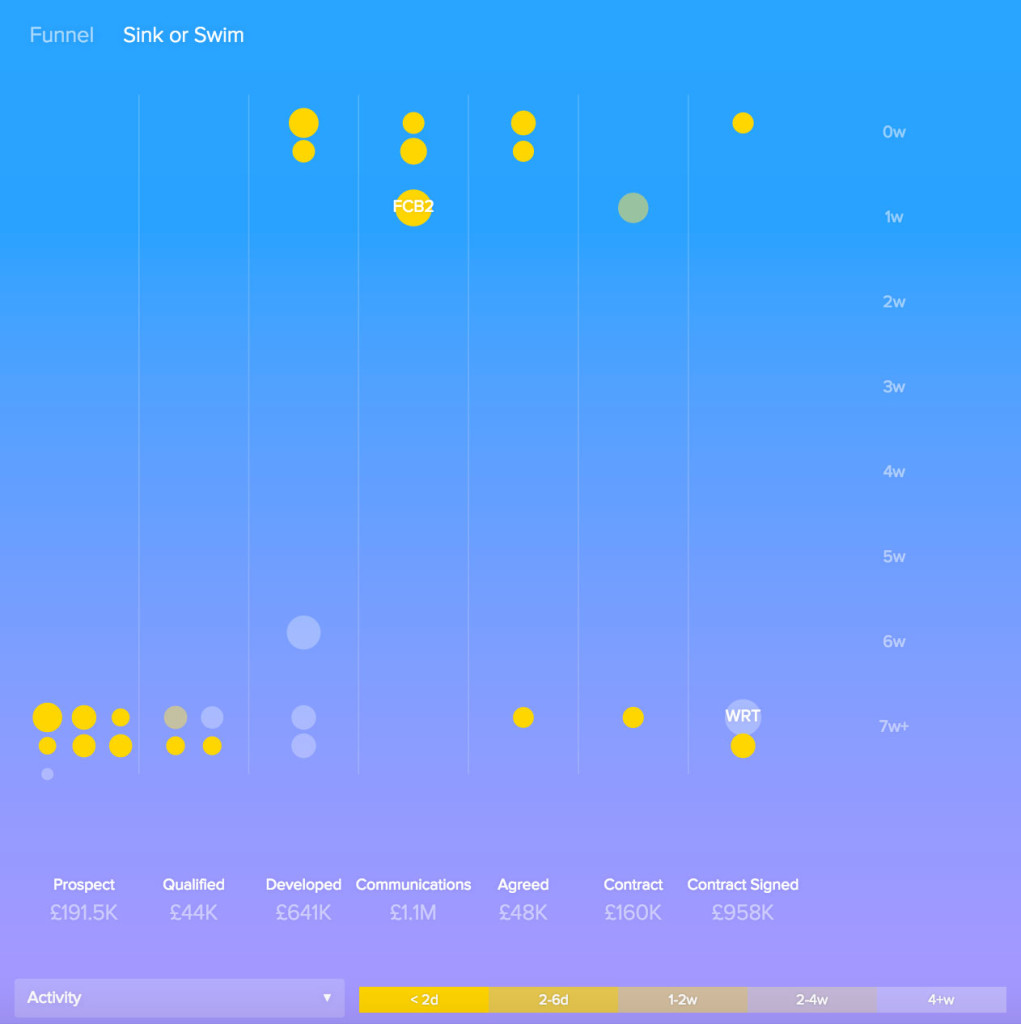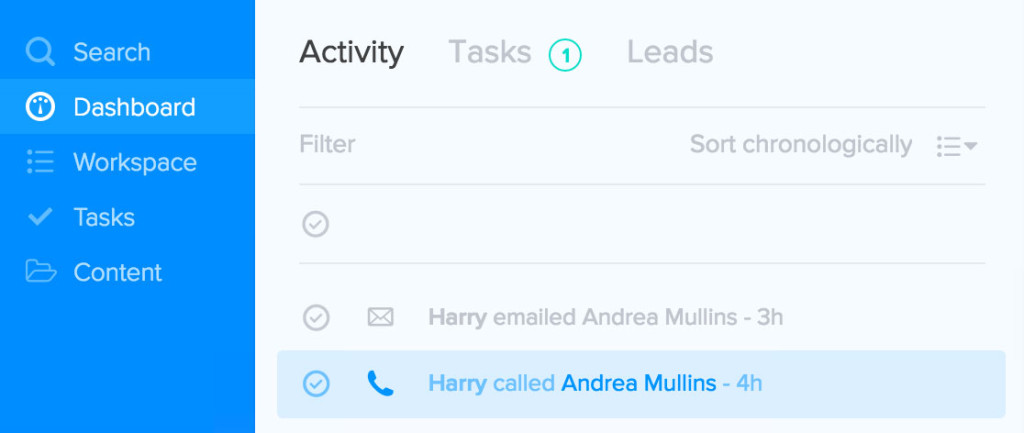In the SME and Startup world we are all searching for the Holy Grail of answers: which of our marketing campaigns are working, and more importantly, how much are they costing us?
Working out your return on your investment (ROI) from marketing and sales campaigns is Mission Impossible. We’ve taken a fresh approach to working out how much your new customers cost you in SalesSeek.
Marketing ROI? Forget it.
In the past working out the cost of acquiring a customer meant you had to compare the cost-per-lead vs the number of deals closed and the average customer’s lifetime value. It’s complicated at best. This is more challenging as the number of marketing channels increase and the number of platforms your customers use increase too.
Trying to measure all of that is just too time-consuming and has too many variables.
Tracking ROI of B2B events
We’ve found B2B marketing costs are usually much easier to track as the approach tends to be marketing to a known and named individual. It’s a known fact that your leads are more likely to make those purchase decisions having had a few interactions with your sales and marketing teams. The trick is in streamlining and making those touchpoints as personalized, seamless and measurable as possible.
Here’s an example: A potential customer clicks on a Google Ad, or comes to you directly via your website, after that first contact your marketing team could send out an email campaign telling them about your product and inviting them to have a chat or demo. At this point, Sales gets back involved and takes over to close the deal.
We’ve found that process to be a little bit too cumbersome for our liking, leaving too many cracks for hot prospects to fall into the Abyss of Lost Leads.
So here are 5 top tips to help you measure your marketing and sales ROI in SalesSeek.
Tip 1: Track your incoming marketing traffic.
Instead of trying to allocate a cost to every activity, use SalesSeek to capture your marketing data and assign costs to each individual contact, recording the cost of every sales or marketing event with that lead.
Tip 2: Monitor your business’ marketing pulse and purse with 6 Key Points of Interest in the Marketing Dashboard.
We built the Marketing Dashboard with the aim of giving you the key info you would need providing you with the most complete overview at a glance. This allows you to make informed judgments of how your marketing campaigns are performing in real-time. The Marketing Dashboard will also show you exactly where your leads are coming from so you can focus your energies on the areas getting you the most traffic.
Naturally, we designed SalesSeek so you can keep an eye on your spend, showing you the actual cost per lead, highlighting the campaigns that are working for you, and instead of trying to calculate these costs by hand, SalesSeek will record all.
Tip 3: Create, Automate, Send and Monitor email campaigns directly within SalesSeek.
You’ve probably seen the countless email marketing platforms out there. However SalesSeek not only manages your customer relationships, but it allows you to build and automate your campaigns based on your entire customer relationship activities with anyone in your company, all directly from within one web app.
Use Smart Groups to isolate the people you ought to be speaking to based on almost any filter. Once that’s done tap up this whole list with your slick content(*) in one hit and monitor the open rates, click-throughs rates, and conversions. (*amazing email content not included).
Automating your email processes by creating a lifecycle emails is a tried and tested way of ensuring that you are interacting consistently with your leads. If you’re new to the world of Lifcycle emails, a great resource with awesome tips and tricks from 50 of the leading content marketers can be found on our friend SaaSquatch’s blog: What is Lifecycle Marketing?
For example, if Bob signs up to your website for a free trial on a Monday, you can send him an email asking how he’s getting on on Tuesday, send him some tips on Thursday and then a week later send him a discounted offer to give him that extra push to purchase.
Tip 4: Measure activity levels in the Sales Funnel
Use the Team Dashboard to see how leads are progressing through your company’s sales process. We’ve made our Sales Funnel as visual as possible to allow your sales and marketing teams to see which leads are hot and which ones need some more TLC.

Our unique ‘Sink or Swim’ Funnel view allows you to see which deals are sinking and need to be progressed to the next stage and which are swimming and should be moving to ‘close’. Unlike the standard Sales Funnel that shows you where in your sales process your leads and deals are, this view shows you the last time you interacted with them, meaning your prospects don’t lose interest and you don’t miss the boat.
Tip 5: Track calls/emails/deals closed from the Sales Manager dashboard.
Every time you interact with your leads your are building rapport and a relationship, and we feel it’s these relationships and interactions that help close deals. With the Sales Manager Dashboard you can track all of your team, so you know what’s been said, who said it, what activities have happened since, allowing you to pick your next move with more intelligence.
Every sales and marketing activity has a cost and tracking them with SalesSeek makes it much easier to focus on activities that deliver the best return. Understanding Sales and Marketing ROI is critical to scaling your business, get hands on with SalesSeek and see for yourself – click here to sign up for a demo.





